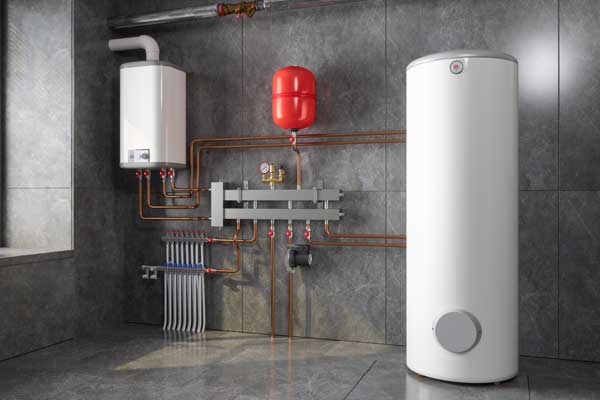Professional Guidance on Maintaining Your Home's Hot Water SystemWays to Effectively Maintain Your Home's Hot Water System
Professional Guidance on Maintaining Your Home's Hot Water SystemWays to Effectively Maintain Your Home's Hot Water System
Blog Article
Have you been looking for selective information about Tips For Maintaining Your Hot Water Heater?

Warm water is necessary for everyday comfort, whether it's for a refreshing shower or cleaning meals. To ensure your warm water system runs efficiently and lasts much longer, routine maintenance is key. This write-up supplies useful tips and understandings on exactly how to maintain your home's warm water system to stay clear of interruptions and costly fixings.
Intro
Maintaining your home's warm water system might seem challenging, yet with a few basic steps, you can guarantee it operates efficiently for years to come. This guide covers every little thing from understanding your warm water system to DIY upkeep pointers and understanding when to call specialist help.
Significance of Keeping Your Warm Water System
Regular maintenance not just extends the lifespan of your hot water system however additionally ensures it operates effectively. Ignoring upkeep can result in reduced performance, greater power costs, and also early failing of the system.
Signs Your Warm Water System Demands Upkeep
Understanding when your hot water system needs attention can avoid significant issues. Look out for indicators such as irregular water temperature level, unusual noises from the heater, or corroded water.
Recognizing Your Warm Water System
Prior to diving right into upkeep tasks, it's helpful to recognize the fundamental components of your warm water system. Normally, this consists of the water heater itself, pipelines, anode poles, and temperature controls.
Month-to-month Upkeep Tasks
Normal month-to-month checks can assist catch minor issues before they intensify.
Purging the Hot Water Heater
Purging your water heater eliminates sediment accumulation, enhancing effectiveness and extending its life.
Checking and Changing Anode Rods
Anode poles protect against corrosion inside the storage tank. Examining and changing them when broken is critical.
Checking and Readjusting Temperature Level Settings
Changing the temperature level settings guarantees optimum performance and safety.
Do It Yourself Tips for Upkeep
You can perform numerous upkeep tasks on your own to maintain your hot water system in top condition.
Looking for Leakages
On a regular basis examine pipelines and links for leakages, as these can lead to water damages and higher bills.
Testing Pressure Alleviation Valves
Evaluating the pressure relief valve guarantees it functions correctly and avoids too much stress build-up.
Shielding Pipelines
Protecting warm water pipelines minimizes warm loss and can save energy.
When to Call an Expert
While do it yourself upkeep is helpful, some concerns require professional expertise.
Complex Issues Calling For Expert Assistance
Examples include major leaks, electric troubles, or if your hot water heater is constantly underperforming.
Routine Professional Maintenance Conveniences
Expert maintenance can include comprehensive inspections, tune-ups, and ensuring conformity with safety and security requirements.
Final thought
Routine maintenance of your home's hot water system is vital for effectiveness, durability, and cost savings. By following these tips and knowing when to seek specialist aid, you can make certain a trustworthy supply of hot water without unexpected disruptions.
How to Maintain an Instant Hot Water Heater
Before tinkering with your hot water heater, make sure that it’s not powered on. You also have to turn off the main circuit breaker and shut off the main gas line to prevent accidents. Also turn off the water valves connected to your unit to prevent water from flowing into and out of the appliance. 2. When you’re done, you have to detach the purge valves’ caps. These look like the letter “T” and are situated on either side of the water valves. Doing so will release any pressure that has accumulated inside the valves while at the same time avoid hot water from shooting out and burning your skin. 3. When the purge valves’ caps are removed, you have to connect your hosing lines to the valves. Your unit should have come with three hoses but if it didn’t, you can purchase these things from any hardware or home repair shops. You can also get them from retail stores that sell water heating systems. Read the user’s manual and follow it to complete this task properly. When the hosing lines are connected, open the purge port’s valves. 4. You should never use harsh chemical cleaners or solutions when cleaning your unit. Make use of white vinegar instead. It should be undiluted and you’ll probably use about 2 gallons. 5. Now flush your water heater. This task should probably take about 40 minutes. We can’t give you specific directions for this because the procedure is carried out depending on the type, model and brand of your heater. With that being said, refer to the user’s manual. 6. When you’re done draining the unit, you have to turn off the purge port valves again. Remove the hosing lines that you earlier installed on each of the water valves. Put the valve caps (purge port) back in their respective places and be very careful so as not to damage the rubber discs that are found inside these caps. 7. Now that everything’s back in place, check your user’s manual again to find out how to reactivate your water heating system. 8. Once it is working, turn one of your hot water faucets on just to let air pass through the heater’s water supply pipes. Leave the tap on until water flows smoothly out of it. https://www.orrplumbing.com/blog/2014/september/how-to-maintain-an-instant-hot-water-heater/
I recently found that review about What Kind of Maintenance Do Water Heaters Need? when looking around the search engines. Sharing is caring. You just don't know, you could be helping someone out. Thanks for your time spent reading it.
Call Today Report this page